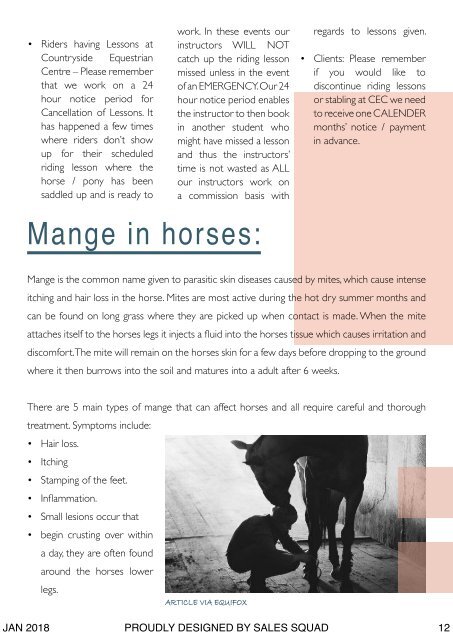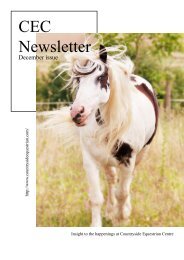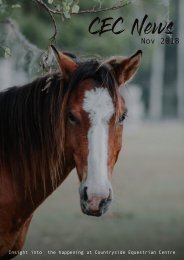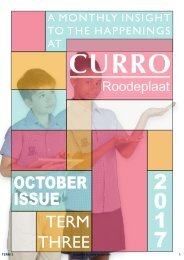CEC Newsletter January 2018
Create successful ePaper yourself
Turn your PDF publications into a flip-book with our unique Google optimized e-Paper software.
• Riders having Lessons at<br />
Countryside Equestrian<br />
Centre – Please remember<br />
that we work on a 24<br />
hour notice period for<br />
Cancellation of Lessons. It<br />
has happened a few times<br />
where riders don’t show<br />
up for their scheduled<br />
riding lesson where the<br />
horse / pony has been<br />
saddled up and is ready to<br />
work. In these events our<br />
instructors WILL NOT<br />
catch up the riding lesson<br />
missed unless in the event<br />
of an EMERGENCY. Our 24<br />
hour notice period enables<br />
the instructor to then book<br />
in another student who<br />
might have missed a lesson<br />
and thus the instructors’<br />
time is not wasted as ALL<br />
our instructors work on<br />
a commission basis with<br />
regards to lessons given.<br />
• Clients: Please remember<br />
if you would like to<br />
discontinue riding lessons<br />
or stabling at <strong>CEC</strong> we need<br />
to receive one CALENDER<br />
months’ notice / payment<br />
in advance.<br />
Mange in horses:<br />
Mange is the common name given to parasitic skin diseases caused by mites, which cause intense<br />
itching and hair loss in the horse. Mites are most active during the hot dry summer months and<br />
can be found on long grass where they are picked up when contact is made. When the mite<br />
attaches itself to the horses legs it injects a fluid into the horses tissue which causes irritation and<br />
discomfort. The mite will remain on the horses skin for a few days before dropping to the ground<br />
where it then burrows into the soil and matures into a adult after 6 weeks.<br />
There are 5 main types of mange that can affect horses and all require careful and thorough<br />
treatment. Symptoms include:<br />
• Hair loss.<br />
• Itching<br />
• Stamping of the feet.<br />
• Inflammation.<br />
• Small lesions occur that<br />
• begin crusting over within<br />
a day, they are often found<br />
around the horses lower<br />
legs.<br />
ARTICLE VIA EQUIFOX<br />
JAN <strong>2018</strong> PROUDLY DESIGNED BY SALES SQUAD 12

















